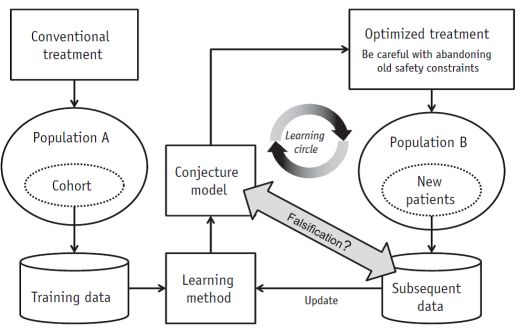Phenomenological modelling
Project aim
Many effects of radiation in normal tissues are still insufficiently understood from a biological or mechanistic viewpoint. It is therefore difficult to make reliable quantitative predictions. Modelling these effects is largely driven by clinical data rather than by mechanistic or biological knowledge. This means that we learn from phenomenological observations, which is a process that has some fundamental limitations related to overfitting, model variability, generalizability, and causality. When combined, the fields of statistics and machine learning may provide solutions to these problems and may thereby lead to the development of rapid-learning healthcare systems.
People involved
Arjen van der Schaaf, Lisa van den Bosch, Marianna Sijtsema, Sanne van Dijk, Roel Kierkels, Charlotte Brouwer, Hans Langendijk.
Collaborators
THINC (The Health care INnovation Centre) Juliuscentrum, Utrecht, Netherlands:
Ewoud Schuit, Hans Reitsma
References
A van der Schaaf (2015) Embracing Phenomenological Approaches to Normal Tissue Complication Probability Modeling: A Question of Method. Int J Radiat Oncol Biol Phys 91(3): 468-71 (pdf)
MEMC Christianen (2016) Swallowing sparing intensity modulated radiotherapy (SW-IMRT) in head and neck cancer: Clinical validation according to the model-based approach. Radiother Oncol 118(2):298-303 (pdf)
J Widder (2016) The Quest for Evidence for Proton Therapy: Model-Based Approach and Precision Medicine. Int J Radiat Oncol Biol Phys 95(1): 30-36 (pdf)

 English
English
 Nederlands
Nederlands
